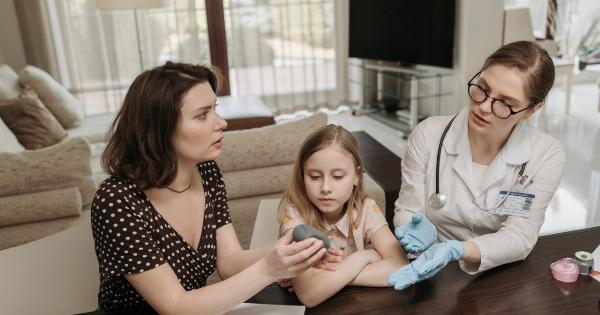Hemophilia is a rare blood disorder that affects mostly males, in which the blood does not clot properly due to a lack or deficiency of certain clotting factors in the blood.
The Hellenic Hemophilic Protection Association is a national patient organization committed to improve the quality of life of people with hemophilia in Greece. Here, we will provide basic information on the ABCs of hemophilia for individuals and families affected by this condition.
What is Hemophilia?
Hemophilia is an inherited bleeding disorder in which the blood cannot clot properly. Clotting factors are proteins in the blood that work together to form a clot to stop bleeding after an injury.
In hemophilia, the blood is missing or has low levels of clotting factors, which can cause excessive and prolonged bleeding after an injury or surgery. Hemophilia is usually diagnosed at birth or in early childhood, but it can be diagnosed later in life.
Types of Hemophilia
There are two main types of hemophilia:.
Hemophilia A
Hemophilia A is the most common type of hemophilia and is caused by a deficiency of clotting factor VIII. It affects about 1 in 5,000 males.
People with hemophilia A may experience bleeding episodes after an injury or spontaneously, and the severity of the bleeding can vary. Mild cases may only bleed after a surgery or injury. Severe cases can have frequent spontaneous bleeding episodes that can lead to joint damage, disability, or life-threatening bleeding.
Hemophilia B
Hemophilia B is less common and is caused by a deficiency of clotting factor IX. It affects about 1 in 30,000 males. The symptoms and severity of hemophilia B are similar to those of hemophilia A.
Symptoms of Hemophilia
The symptoms and severity of hemophilia vary depending on the type and severity of the condition.
People with mild hemophilia may not experience symptoms until they are injured or have surgery, while people with severe hemophilia may experience bleeding episodes without an obvious cause.
Common symptoms of hemophilia include:.
- Bruising
- Nosebleeds
- Bleeding in the mouth
- Bleeding in the joints, muscles, or soft tissues
- Bleeding inside the body (such as in the brain or abdomen)
Bleeding in the joints can cause pain, swelling, and stiffness and can lead to long-term joint damage (hemophilic arthropathy) if left untreated. Bleeding inside the body can be life-threatening and requires urgent medical attention.
Treatment of Hemophilia
While there is no cure for hemophilia, it can be managed with proper treatment. The main treatment for hemophilia is replacement therapy, where the missing or deficient clotting factor is replaced with clotting factor concentrate.
This treatment can be given as preventive therapy (prophylaxis) on a regular schedule to prevent bleeding episodes or as on-demand therapy to stop bleeding when it occurs.
Additional treatments may include:.
- Pain management with nonsteroidal anti-inflammatory drugs (NSAIDs) or other pain medications
- Physical therapy to reduce joint stiffness and improve mobility
- Surgery to repair joint damage or stop bleeding in the brain
- Gene therapy, a new experimental treatment that aims to permanently correct the genetic defect that causes hemophilia
It is important for people with hemophilia to work closely with their healthcare team to develop an individualized treatment plan that meets their specific needs and lifestyle.
Living with Hemophilia
Living with hemophilia can present challenges, but with proper management, most people with hemophilia can lead full and active lives. People with hemophilia should:.
- Get regular medical checkups and follow their treatment plan
- Avoid activities that increase the risk of bleeding, such as contact sports or heavy lifting
- Take steps to prevent and manage bleeding, such as wearing protective gear or using a soft-bristled toothbrush
- Learn about their condition and how to manage it
- Join a support group or get counselling to help cope with the emotional aspects of hemophilia
It is important for people with hemophilia to wear a medical alert bracelet or necklace and carry a card that lists their condition and emergency contact information in case of an emergency.
Support from the Hellenic Hemophilic Protection Association
The Hellenic Hemophilic Protection Association provides support and resources to people with hemophilia and their families in Greece. The organization offers:.
- Information and education about hemophilia
- Access to treatment and medical care
- Emotional support and counselling
- Advocacy for the rights of people with hemophilia
- Opportunities to connect with others affected by hemophilia
Individuals and families affected by hemophilia can contact the Hellenic Hemophilic Protection Association for more information and support.
Conclusion
Hemophilia is a rare but serious blood disorder that affects mostly males. The Hellenic Hemophilic Protection Association is a national patient organization committed to improving the quality of life of people with hemophilia in Greece.
By understanding the ABCs of hemophilia – the symptoms, types, treatments, and support available – individuals and families affected by this condition can take steps to manage their condition and lead full and active lives.




























